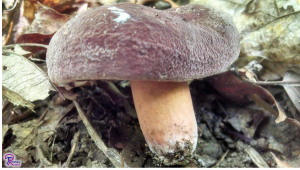#116: Scorias spongiosa
This bizarre fungus forms a fuzzy mat of tan to black tissue on the branches, trunks, and ground underneath American Beech trees. Scorias spongiosa belongs to a group of fungi called “sooty molds.” Sooty molds digest the honeydew (essentially sugar-rich aphid poop) dropped by aphids in the process of feeding on plants. There are many kinds of sooty molds and if you’ve ever had an aphid (or other insect) infestation on trees in your garden, they you’ve probably seen sooty molds. Normally, sooty molds form a thin, black film on leaves and branches under places where the aphids are feeding. spongiosa differs from normal sooty molds because it forms films that can be as thick as a football!







![#011: Characteristics of Kingdom Fungi [Archived]](https://www.fungusfactfriday.com/wp-content/themes/hueman/assets/front/img/thumb-small-empty.png)

